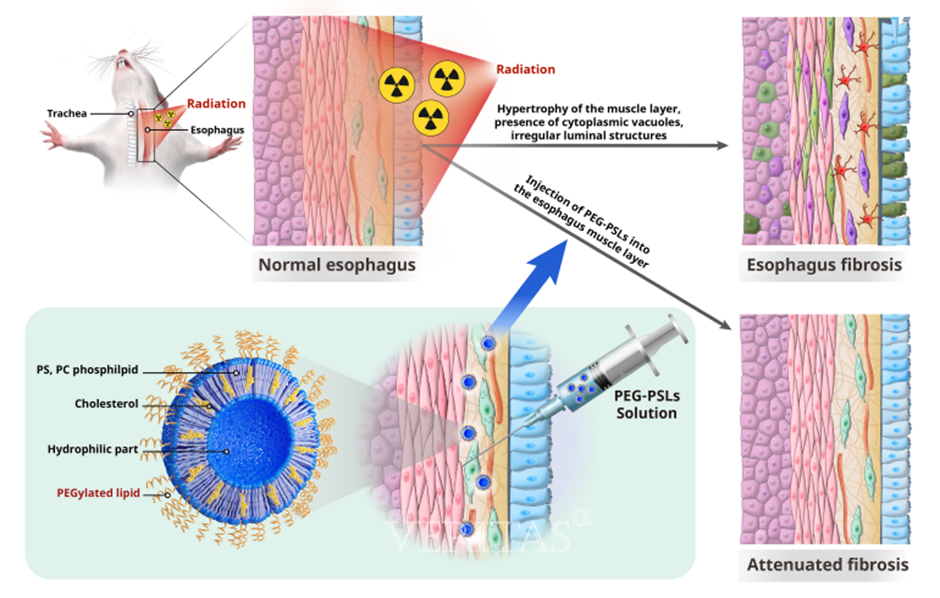Development of Innovative Nanoparticles to Prevent Radiation-Induced Esophageal Fibrosis

Radiotherapy is one of the core treatment methods for head and neck cancer and esophageal cancer, playing a critical role in reducing or completely eliminating tumors in combination with surgery or chemotherapy. However, because radiation affects not only cancer cells but also surrounding normal cells, it can cause a wide range of complications, including dysphagia, xerostomia, pulmonary fibrosis, and impaired organ function. In particular, fibrosis—a condition in which tissue becomes abnormally hardened—occurs with considerable frequency and can lead to permanent disabilities. This significantly reduces patients’ quality of life, yet effective methods for prevention or treatment have so far been lacking.
To address this issue, a collaborative research team led by Professor Eun-Jae Chung (Research Professor In Gul Kim) from the Department of Otorhinolaryngology at Seoul National University Hospital and Professor Hyeong-Cheol Yang (Research Professor Gyeung Mi Seon) from the School of Dentistry at Seoul National University has developed innovative nanoparticles that specifically target macrophages.
These nanoparticles are liposomes composed of phosphatidylserine (PS) and polyethylene glycol (PEG). Their core mechanism lies in selectively modulating macrophage activity to exert both anti-inflammatory and anti-fibrotic effects.
Macrophages play a crucial role in immune responses and tissue regeneration, making them an attractive therapeutic target.
When tested in an animal model of radiation-induced esophageal fibrosis, the nanoparticles demonstrated a clear inhibitory effect on fibrotic progression.
This result highlights the potential to prevent tissue damage and chronic complications caused by radiotherapy, marking an important advancement in the field.
Building on this achievement, the research team plans to actively pursue clinical applications aimed at improving the quality of life for patients undergoing radiotherapy.
Meanwhile, this study has been published in the international journal Bioactive Materials (Impact Factor: 20.3).